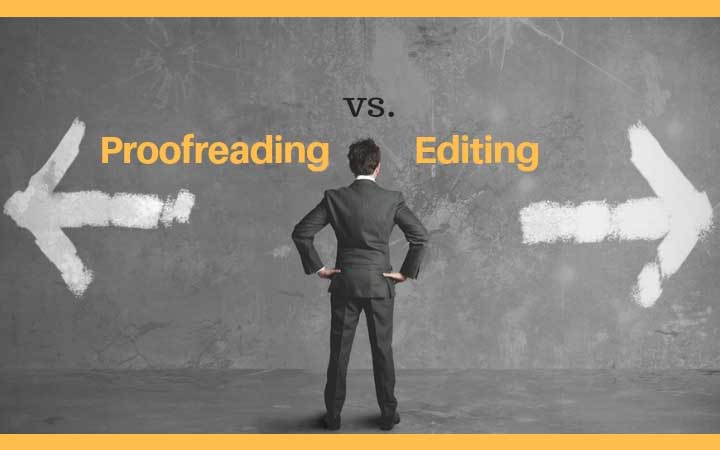Proofreading and editing are often considered to be interchangeable terms but they are definitely not. Many clients that contact us for the first time are unaware of the differences between the two and unsure of which service they need.
In this post, we help clients and translators understand the differences between proofreading and editing. We also discuss costs and provide recommendations on which type of service a typical client contacting a translation agency usually needs.
What Is Proofreading?
By definition, proofreading involves a surface-level check and it should be done in the final stages of a document’s preparation. Although it is less comprehensive than editing, it still plays a vital role in the writing or translation process. Proofreading involves scanning for errors in grammar, punctuation, spelling, and syntax. A proofreader also focuses on checking the layout, making sure that the final draft is free of formatting and typographical errors. Although a professional proofreader might do light editing, they do not fulfill the role of an editor and, if they come across too many errors, they might return the document for further editing.
What Is Editing?
Editing requires a more in-depth review than proofreading. It involves a detailed examination of a document, including implementing changes that improve the text’s overall style and flow. An editor is typically either an expert on the subject matter handled in the document or has excellent research skills. This is due to editors also needing to check the terminology and facts in a document, highlighting discrepancies and asking any questions they may have to the writer or translator. The editing process also includes correcting any grammar, spelling, or punctuation errors.
Editing and Proofreading Costs
Editing and proofreading services are charged per hour or per word. At least 20% of a regular per word translation rate is usually charged for monolingual proofreading and up to 75% for bilingual editing (comparing the translation with the source text). The price depends on the quality of the document and how much research needs to be done. If few corrections are needed, the proofreader or editor may charge per hour, calculating the time it takes to complete the task.
Which Service Is Best for You?
When working with translations, proofreading is essential. Even though a translator may proofread their own work, a second pair of eyes is needed to deliver a high-quality translation that’s free of errors. If you hire a translation agency, the proofreading service is typically included in their price.
The document itself, its purpose, and its level of importance can influence whether you should choose a proofreading or editing service. If the author of the text is not a confident writer, native speaker or is unsure of the terminology they have used, an editing service is more appropriate. The same is true when multiple authors have contributed to writing a text and consistency is needed. Proofreading should be chosen if you only need a document that’s free of mistakes rather than improving the quality of the writing. If you have any doubts about which service is best for your needs, at Transpanish we can offer you free advice.
Final Recommendations
While you might think it’s simpler and less costly to ask a friend or colleague to review your document, professional proofreaders and editors have a firm understanding of the nuances of the language your text is written in and are prepared to identify and eliminate any spelling and grammatical errors, as well as any inconsistencies in terminology or formatting. Proofreading and editing is what they do for a living and they have an eagle eye for mistakes than an average reader would overlook.
Last but not least, don’t send a document translated by a machine translator for proofreading and editing. These documents almost always need to be retranslated and, as a result, the translator will charge their standard translation rate.








